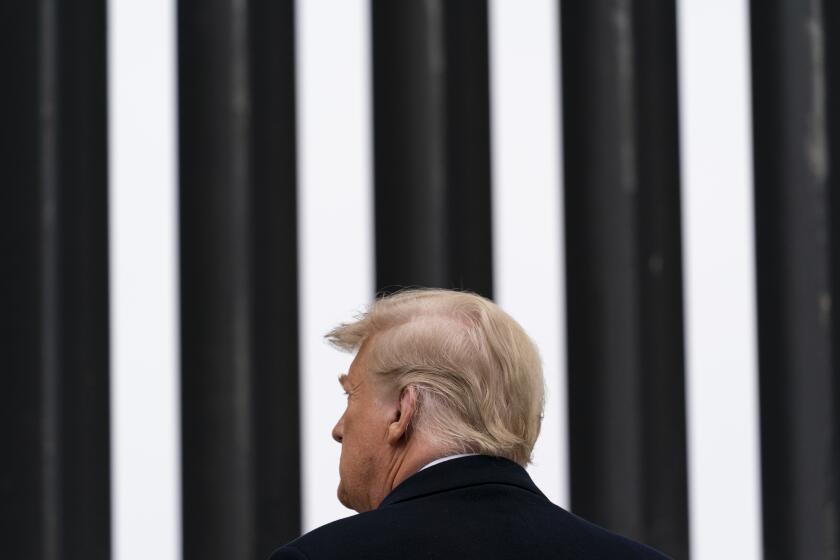In threatening to shoot rioters, Trump takes a page from George Wallace’s playbook

- Share via
In a tweet about violent protests in Minneapolis over the death of a black man in police custody, President Trump thundered: “These THUGS are dishonoring the memory of George Floyd, and I won’t let that happen . . . Any difficulty and we will assume control but when the looting starts, the shooting starts.”
Twitter, as part of its newfound vigilance about Trump’s rants, appended a note saying that the tweet “violated the Twitter Rules against glorifying violence.” It said it didn’t remove the tweet because of its “public interest” exception for tweets by government officials. The more ominous aspect of the “looting/shooting” tweet is that it suggested that Trump, fearful of losing the White House in November, is willing to exploit racial tensions.
Trump’s line about looting and shooting isn’t original. It was apparently coined in 1967 by Miami Police Chief Walter Headley.
In 1968, as a high school student, I attended a rally in Pittsburgh for presidential candidate George Wallace at which I recalled he used the slogan as part of his riff about the need for law and order. Contemporary accounts of the Pittsburgh rally don’t include that line, but Wallace is on record as saying at another rally that year: “We don’t have riots in Alabama. They start a riot down there, first one of ’em to pick up a brick gets a bullet in the brain, that’s all.”
Note that Wallace didn’t couch his threat of retaliatory violence in racial terms. Neither did Trump in his tweet; in fact, he said that violent protesters were dishonoring the memory of a black man killed in an encounter with police. (He invoked Floyd’s memory in a follow-up tweet.)
Nor should we assume that Trump knows the provenance of the “looting/shooting” line. (It’s unclear that he was familiar with the isolationist history of “America First” when he made that his campaign slogan.)
Still, as with Wallace, Trump’s support for harsh police tactics – remember his suggestion that cops shouldn’t be “too nice” in putting suspects into a police car? – has an inescapable racial context. Twitter in flagging Trump’s tweet referred to its “historical context,” but race looms large in that history. A 1967 United Press International article about Headley’s comment about shooting looters referred to the chief’s “shotgun crackdown on Negro slum hoodlums.”
Obviously, it’s possible to denounce violence by protesters without inviting suspicion that you’re playing the race card. But given Trump’s history, in which he sometimes seems to be channeling Wallace, it’s hard to give him the benefit of the doubt.
Trump’s complaints about internet “censorship” might appeal to a small segment of his base; but his denunciation of “thugs” with its racial connotations potentially has even broader appeal. Urban violence was a potent issue for Wallace with white voters, and it could be a political life preserver for a president who vowed in his inaugural address to end “American carnage.”
More to Read
A cure for the common opinion
Get thought-provoking perspectives with our weekly newsletter.
You may occasionally receive promotional content from the Los Angeles Times.










